 17.11.2024, 22:08
17.11.2024, 22:08
|
#1906
|
|
Местный
Регистрация: 31.08.2024
Сообщений: 19,689
Сказал(а) спасибо: 0
Поблагодарили 2 раз(а) в 2 сообщениях
|
 Strategic Business Planning by Hains Academy
Strategic Business Planning by Hains Academy
 Free Download Strategic Business Planning by Hains Academy
Free Download Strategic Business Planning by Hains Academy
Published 10/2024
MP4 | Video: h264, 1920x1080 | Audio: AAC, 44.1 KHz
Language: English | Size: 301.10 MB | Duration: 1h 4m
Entrepreneurial Series Part 3: Goal Setting, Business Environment Analysis, and Implementation
What you'll learn
Understand the fundamentals of strategic business planning.
Develop clear and measurable business objectives through the SMART goal-setting framework.
Analyse both internal and external business environments using tools like SWOT and PESTLE.
Formulate, implement, and control business strategies to ensure organisational success.
Align the organisation's vision, mission, and values with long-term strategic goals.
Integrate innovation and adaptability into business strategies for sustained growth.
Requirements
There are no formal prerequisites for this course, though a basic understanding of business concepts is beneficial. It is designed to be accessible for beginners, as well as those with experience who are seeking to deepen their strategic planning capabilities.
Description
Strategic Business Planning: Crafting a Roadmap for Success is the third instalment in the Entrepreneurial Series by Hains Academy. This course equips you with the tools to develop comprehensive business strategies and achieve long-term success. In today's fast-paced business environment, effective strategic planning is more important than ever. This course will help you identify clear business objectives, understand the complexities of your business environment, and execute strategies that align with your organisation's vision and mission.Throughout the course, you will explore essential topics, such as strategy formulation, implementation, and control, learning how to develop actionable plans that guide your organisation toward achieving its goals. You will also learn analytical tools like SWOT and PESTLE to assess both internal and external factors that influence business success.Additionally, this course highlights the importance of innovation and adaptability in maintaining competitive advantage.What is primarily taught in this course?Foundations of strategic business planning.Strategy formulation and setting SMART goals.Internal and external business environment analysis.Strategy implementation and resource allocation.Monitoring and evaluating strategic performance.Integrating innovation and sustainability into strategic planning.By the end of the course, you will have a strategic roadmap that aligns resources with objectives, ensuring your organisation is prepared for growth and success in a dynamic marketplace.
Overview
Section 1: Course introduction
Lecture 1 Course introduction
Section 2: Section 1 - Techniques for in-depth market analysis
Lecture 2 Section 1 introduction - Techniques for in-depth market analysis
Lecture 3 Lesson 1.1 - Introduction to in-depth market
Lecture 4 Lesson 1.2 - Understanding your business environment
Lecture 5 Lesson 1.3 - Setting vision, mission, and values
Lecture 6 Section 1 conclusion
Section 3: Section 2 introduction - Strategy formulation
Lecture 7 Section 2 introduction - Strategy formulation
Lecture 8 Lesson 2.1 - Goal setting and objective definition
Lecture 9 Lesson 2.1 - Goal setting and objective definition
Lecture 10 Lesson 2.3 - Formulating strategies
Lecture 11 Section 2 conclusion
Section 4: Section 3 - Strategy implementation
Lecture 12 Section 3 introduction - Strategy implementation
Lecture 13 Lesson 3.1 - Action plans and resource allocation
Lecture 14 Lesson 3.2 - Change management and communication
Lecture 15 Lesson 3.3 - Monitoring and control
Lecture 16 Section 3 conclusion
Section 5: Section 4 introduction - Strategy evaluation and control
Lecture 17 Section 4 introduction - Strategy evaluation and control
Lecture 18 Lesson 4.1 - Evaluating strategic performance
Lecture 19 Lesson 4.2 - Strategic control systems
Lecture 20 Lesson 4.3 - Learning from strategic execution
Lecture 21 Section 4 conclusion
Section 6: Section 5
Lecture 22 Section 5 introduction - Innovation and strategic planning
Lecture 23 Lesson 5.1 - Fostering innovation in strategy
Lecture 24 Lesson 5.2 - Adapting to market changes
Lecture 25 Lesson 5.3 - Sustainability and corporate responsibility
Lecture 26 Section 5 conclusion
Section 7: Course conclusion.
Lecture 27 Course conclusion
Entrepreneurs who want to create a solid business strategy for growth.,Business managers and executives seeking to improve their strategic planning skills.,Individuals preparing to take on leadership roles within their organisations.,Professionals looking to develop strategies for competitive advantage and market positioning.
Screenshot
Homepage
Код:
https://www.udemy.com/course/entrepreneurial-series-part-3-strategic-business-planning/
Код:
Rapidgator
https://rg.to/file/3c1fa51da004a7ae83be5631f0a15a0a/waqlb.Strategic.Business.Planning.by.Hains.Academy.rar.html
Fikper Free Download
https://fikper.com/CSDgC4QP2Z/waqlb.Strategic.Business.Planning.by.Hains.Academy.rar.html
No Password - Links are Interchangeable
|

|

|
 17.11.2024, 22:11
17.11.2024, 22:11
|
#1907
|
|
Местный
Регистрация: 31.08.2024
Сообщений: 19,689
Сказал(а) спасибо: 0
Поблагодарили 2 раз(а) в 2 сообщениях
|
 Strategic Communication - Foundations of Influence and Impact
Strategic Communication - Foundations of Influence and Impact
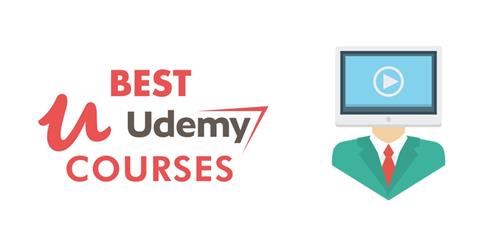 Free Download Strategic Communication - Foundations of Influence and Impact
Free Download Strategic Communication - Foundations of Influence and Impact
Published 10/2024
MP4 | Video: h264, 1280x720 | Audio: AAC, 44.1 KHz, 2 Ch
Language: English | Duration: 2h 39m | Size: 726 MB
Building Effective Communication Strategies Through Theories of Influence and Audience Engagement
What you'll learn
Understand the core principles and foundations of strategic communication.
Explore key communication models and theories that drive effective messaging.
Learn how to analyze and apply strategic communication theories to real-world scenarios.
Develop skills for formulating clear and persuasive communication strategies.
Understand the purpose behind message creation and its impact on the audience.
Gain insights into audience segmentation and how to tailor messages for specific groups.
Learn techniques for crafting messages that resonate with diverse audiences.
Explore the role of human communication dynamics in shaping message delivery.
Understand the psychological factors that influence communication effectiveness.
Analyze social dynamics and their impact on communication strategies.
Learn how cultural differences influence communication in multicultural settings.
Develop strategies for bridging cultural communication gaps in global teams.
Understand how to apply theoretical frameworks to enhance interpersonal interactions.
Explore the importance of audience engagement in strategic communication.
Gain insights into how strategic communication can be used to influence public opinion.
Understand how to apply communication theory to solve real-world communication challenges.
Requirements
No Prerequisites.
Description
In today's increasingly interconnected world, strategic communication plays a pivotal role in the success of individuals and organizations alike. This course offers a comprehensive exploration of the key theories and foundational principles that underpin strategic communication. Whether you're an aspiring communications professional or a seasoned expert looking to refine your skills, this course is designed to provide you with a deep understanding of how communication strategies are developed, implemented, and evaluated. By focusing on the theoretical underpinnings of communication, students will gain a broad conceptual framework that can be applied across diverse industries and communication contexts.At the heart of this course is the exploration of strategic communication's essential components, beginning with a solid foundation in communication theory. Students will delve into the basics of strategic communication, gaining insights into how communication models and theories inform the way messages are crafted, targeted, and delivered. By focusing on theoretical approaches to communication, the course enables learners to critically evaluate the effectiveness of different communication strategies, applying them in hypothetical real-world scenarios. While the course emphasizes the importance of theory, it encourages students to think about how these ideas can be adapted to practical, real-world applications, ensuring that their learning remains relevant and actionable.One of the key elements of strategic communication is the ability to craft messages that resonate with audiences. This course offers a thorough understanding of message formulation and audience analysis, equipping students with the skills needed to develop persuasive and impactful communication strategies. By exploring the purpose behind messaging and identifying target audiences, learners will be able to tailor communication strategies that drive engagement and foster meaningful connections. Through an exploration of audience segmentation techniques, students will also learn how to adapt messages to suit different demographics, ensuring that communication strategies remain relevant and effective.In addition to message crafting, the course delves into the psychological and sociological aspects of communication. Understanding the human factors that influence communication dynamics is crucial for developing successful strategies. The course explores the foundations of human communication, examining how individuals interact, convey meaning, and interpret messages within different social contexts. This exploration of communication's psychological and sociological dimensions offers a deep understanding of the motivations and influences that drive human interactions, making it easier to navigate complex communication challenges.Cultural dynamics play an increasingly significant role in today's globalized world, and this course dedicates a portion of the curriculum to understanding how culture shapes communication. Students will explore the nuances of cross-cultural communication, learning how to bridge cultural gaps and foster effective interpersonal interactions across diverse environments. By understanding the role that culture plays in shaping communication styles, students will develop the skills necessary to navigate multicultural teams and global organizations with confidence and cultural sensitivity.Overall, this course provides a robust theoretical framework for understanding and applying strategic communication concepts. Students will leave with the ability to critically assess and implement communication strategies that are not only grounded in theory but are also adaptable to real-world situations. This combination of theoretical knowledge and practical insight will enable students to approach communication challenges with a deeper understanding and the tools necessary to succeed in any professional environment.
Who this course is for
Aspiring communications professionals looking to build a strong foundation in strategic communication.
Entry-level marketing or PR professionals seeking to enhance their understanding of communication theories.
Business students or recent graduates wanting to learn how communication strategies influence organizational success.
Individuals aiming to improve their skills in crafting effective and persuasive messages.
Professionals in any industry who want to better engage with diverse audiences and stakeholders.
Anyone interested in understanding the social, psychological, and cultural dynamics of communication.
Learners looking for a theory-based introduction to strategic communication with practical insights for real-world application.
Homepage
Код:
https://www.udemy.com/course/strategic-communication-foundations-of-influence-and-impact/
Screenshot
Код:
Rapidgator
https://rg.to/file/c4c6a3236f1170db246a8639f26f1b47/pobgv.Strategic.Communication.Foundations.of.Influence.and.Impact.rar.html
Fikper Free Download
https://fikper.com/O6kkaD8OEz/pobgv.Strategic.Communication.Foundations.of.Influence.and.Impact.rar.html
No Password - Links are Interchangeable
|

|

|
 17.11.2024, 22:13
17.11.2024, 22:13
|
#1908
|
|
Местный
Регистрация: 31.08.2024
Сообщений: 19,689
Сказал(а) спасибо: 0
Поблагодарили 2 раз(а) в 2 сообщениях
|
 Strategic Crisis Management for Business Protection
Strategic Crisis Management for Business Protection
 Free Download Strategic Crisis Management for Business Protection
Free Download Strategic Crisis Management for Business Protection
Published 10/2024
MP4 | Video: h264, 1280x720 | Audio: AAC, 44.1 KHz, 2 Ch
Language: English | Duration: 2h 30m | Size: 683 MB
Building Foundations in Risk Assessment and Crisis Communication for Effective Business Resilience and Recovery
What you'll learn
Understand the different types of crises businesses face and how to categorize them effectively.
Analyze the impact of various crises on business operations, reputation, and finances.
Learn techniques for identifying potential risks before they escalate into crises.
Assess the probability and potential impact of different risks in a business context.
Gain insight into the theoretical foundations of crisis communication.
Explore how to build effective crisis communication strategies.
Understand stakeholder perspectives during a crisis and how to address their concerns.
Develop skills to proactively manage reputational, financial, and operational risks.
Study strategies for mitigating expansion and global market risks.
Learn to navigate complex geopolitical risks and their effects on supply chains.
Enhance decision-making by analyzing the long-term consequences of crises.
Understand the role of transparent and empathetic communication during data breaches.
Learn the importance of timely and effective communication with stakeholders in times of crisis.
Gain tools to identify early warning signs of potential business crises.
Explore the importance of resilience in crisis management and how businesses can recover effectively.
Learn to evaluate and improve existing crisis management and communication plans.
Requirements
No Prerequisites.
Description
In today's unpredictable business environment, crises are inevitable, and organizations must be equipped with the tools to navigate them effectively. This course provides an in-depth exploration of the various types of crises that businesses face and the strategies necessary to manage them successfully. The focus is on developing a theoretical understanding of crisis management principles, helping students learn how to approach challenges strategically rather than reactively. The course begins by examining the different categories of business crises, ranging from financial and operational disruptions to reputational and technological threats. By studying these classifications, students will gain the ability to recognize the early signs of a crisis and categorize it accordingly, a crucial skill for any crisis manager.Understanding the types of crises is only the first step. A significant portion of the course is dedicated to analyzing the impact that crises can have on an organization, both internally and externally. The complexities of these challenges are not limited to immediate financial losses; they also extend to long-term brand damage, shifts in consumer trust, and disruptions in supply chains. Through comprehensive analysis, students will be able to evaluate the multifaceted effects of a crisis and how these impacts may unfold over time. This theoretical foundation allows future crisis managers to foresee potential outcomes and create informed, strategic responses tailored to each specific situation.Risk identification and assessment are crucial components of any crisis management plan, and the course delves deeply into these areas. Students will learn to identify risks before they develop into full-blown crises, understanding how to evaluate the probability of occurrence and the potential severity of these risks. This includes looking at external factors such as geopolitical risks, market volatility, and technological vulnerabilities, as well as internal factors like organizational culture and operational weaknesses. By applying risk assessment techniques, students will be equipped with the foresight needed to mitigate potential disruptions and implement preventive measures. The course encourages a proactive approach, preparing students to act decisively in the face of looming challenges.A critical aspect of crisis management is effective communication. In times of crisis, organizations must communicate clearly and transparently with stakeholders, from employees and customers to investors and the media. The course explores the theoretical foundations of crisis communication, emphasizing the importance of building trust through strategic messaging. Students will study how to address stakeholder concerns in a way that demonstrates empathy, responsibility, and a commitment to resolution. This section will also focus on how to tailor communication strategies to different types of crises, whether they involve financial downturns, data breaches, or reputational harm.This course equips students with a robust theoretical understanding of crisis management, focusing on risk identification, impact analysis, and strategic communication. Through the exploration of various crisis types and the development of effective management techniques, students will be well-prepared to handle the complexities of modern business crises. By the end of the course, participants will have a strong foundation to approach crises proactively, ensuring they are not only prepared for the inevitable but also capable of turning challenges into opportunities for growth and resilience.
Who this course is for
Business professionals seeking foundational knowledge in crisis management and risk assessment.
Managers and team leaders looking to enhance their crisis communication skills during challenging situations.
Entrepreneurs and small business owners who want to protect their businesses from potential crises.
Individuals pursuing careers in business strategy, risk management, or corporate communications.
Students or recent graduates interested in gaining practical insights into business resilience and recovery strategies.
Human resources and operations professionals responsible for crisis planning and stakeholder management.
Professionals in industries prone to economic, technological, or reputational crises, looking to improve their preparedness and response strategies.
Homepage
Код:
https://www.udemy.com/course/strategic-crisis-management-for-business-protection/
Screenshot
Код:
Rapidgator
https://rg.to/file/dec5ae586397a35f9ea26277c98fea46/armod.Strategic.Crisis.Management.for.Business.Protection.rar.html
Fikper Free Download
https://fikper.com/y3SMSnXuN0/armod.Strategic.Crisis.Management.for.Business.Protection.rar.html
No Password - Links are Interchangeable
|

|

|
 17.11.2024, 22:15
17.11.2024, 22:15
|
#1909
|
|
Местный
Регистрация: 31.08.2024
Сообщений: 19,689
Сказал(а) спасибо: 0
Поблагодарили 2 раз(а) в 2 сообщениях
|
 Strategic Disaster Recovery
Strategic Disaster Recovery
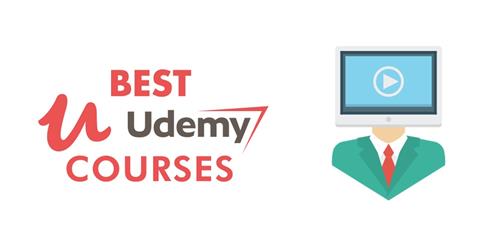 Free Download Strategic Disaster Recovery
Free Download Strategic Disaster Recovery
Published 10/2024
MP4 | Video: h264, 1920x1080 | Audio: AAC, 44.1 KHz
Language: English | Size: 2.94 GB | Duration: 2h 0m
Disaster recovery plan, disaster recovery technique, How to make a disaster plan for your family etc.
What you'll learn
Disaster recovery plan
Disaster recovery technique
Cloud disaster recovery technique
Key components of an IT disaster recovery plan
How to create a business continuity plan
How to make a disaster plan for your family
Top elements of an effective disaster recovery plan
Requirements
Desire to learn more about disaster recovery
Knowledge about computer
Description
Disaster recovery plan is a recorded policy and/or process that is designed to assist an organization in executing recovery processes in response to a disaster to protect business IT infrastructure and more generally promote recovery. The purpose of a disaster recovery plan is to comprehensively explain the consistent actions that must taken before, during and after a natural or man-made disaster so that the entire team can take those actions. A disaster recovery plan should address both man-made disasters that are intentional such as fallout from terrorism or hacking or accidental such as an equipment failure. Organizations of all sizes generate and manage massive amounts of data, much of it mission critical. The impact of corruption or data loss from human error, hardware failure malware, or hacking can be substantial. Therefore, it is essential to create a disaster recovery plan for the restoration of business data from a date backup image. A statement of goals will outline what the organization wants to achieve during or after a disaster, including the recovery time objective ( RTO) and the recovery point objective ( RPO). The recovery point objective refers to how much data the company is willing to lose after a disaster occurs. For example, an RPO might be to lose no more than one hour of data, which means data backups must occur at least every hour to meet this objective. Recovery time objective or RTO refers to the acceptable downtime after an outage before business processes and systems must be restored to operation.
Overview
Section 1: Introduction
Lecture 1 Introduction
Lecture 2 What is a disaster recovery
Lecture 3 What are the types of disaster recovery
Lecture 4 How to build a disaster recovery team
Lecture 5 Top elements of an effective disaster recovery plan
Lecture 6 Benefits of disaster recovery
Section 2: Disaster Recovery Plan
Lecture 7 What is a disaster recovery plan
Lecture 8 What should a disaster recovery plan include?
Lecture 9 Benefits of a disaster recovery plan
Lecture 10 Ways to develop a disaster recovery plan
Lecture 11 RPO versus RTO
Lecture 12 Strategies and tools for a disaster recovery plan
Section 3: Disaster Recovery Techniques
Lecture 13 Synchronous replication
Lecture 14 Asynchronous replication
Lecture 15 Mixed technique
Section 4: How To Make A Disaster Plan For Your Family
Lecture 16 General strategies to making a disaster
Lecture 17 Making a family fire escape plan
Lecture 18 Making a family flood plan
Section 5: How To Create A Business Continuity Plan
Lecture 19 Understanding what makes a good business continuity plan
Lecture 20 Determining key recovery resources
Lecture 21 Creating your business continuity plan
Lecture 22 Implementing your business continuity plan
Section 6: Important Areas To consider In Disaster Recovering Plan
Lecture 23 Cloud disaster recovery techniques
Lecture 24 Key components of an IT disaster recovery plan
Section 7: Conclusion
Lecture 25 How to help during a natural disaster
IT professionals, business managers, consultants, employees, companies, corporations, CEO, directors, cyber professionals
Screenshot
Homepage
Код:
https://www.udemy.com/course/strategic-disaster-recovery/
Код:
Rapidgator
https://rg.to/file/2475a768558365238026f76b00f46dc4/ggtor.Strategic.Disaster.Recovery.part2.rar.html
https://rg.to/file/7d535a42f44f16e5a940eafed5fe0591/ggtor.Strategic.Disaster.Recovery.part4.rar.html
https://rg.to/file/aa6cee47b84889ae0168742659e81a98/ggtor.Strategic.Disaster.Recovery.part1.rar.html
https://rg.to/file/c4c0ea1a434c85ac5a7b1e97f5c61bab/ggtor.Strategic.Disaster.Recovery.part3.rar.html
Fikper Free Download
https://fikper.com/CU3xrAxrO1/ggtor.Strategic.Disaster.Recovery.part1.rar.html
https://fikper.com/K1FOQm99Ov/ggtor.Strategic.Disaster.Recovery.part3.rar.html
https://fikper.com/QkGrGqlYZR/ggtor.Strategic.Disaster.Recovery.part2.rar.html
https://fikper.com/Ue8yePLC1D/ggtor.Strategic.Disaster.Recovery.part4.rar.html
No Password - Links are Interchangeable
|

|

|
 17.11.2024, 22:17
17.11.2024, 22:17
|
#1910
|
|
Местный
Регистрация: 31.08.2024
Сообщений: 19,689
Сказал(а) спасибо: 0
Поблагодарили 2 раз(а) в 2 сообщениях
|
 Strategic Financial Planning Aligning Business Goals
Strategic Financial Planning Aligning Business Goals
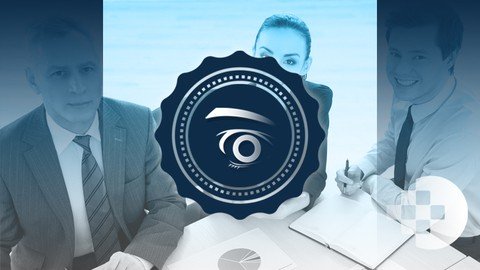 Free Download Strategic Financial Planning Aligning Business Goals
Free Download Strategic Financial Planning Aligning Business Goals
Published 10/2024
MP4 | Video: h264, 1920x1080 | Audio: AAC, 44.1 KHz
Language: English | Size: 498.61 MB | Duration: 2h 40m
Unlocking Financial Strategy: Theories and Tools for Achieving Long-Term Business Success
What you'll learn
Understand the core principles of strategic financial planning.
Learn how to set and align financial goals with business objectives.
Explore the fundamentals of budgeting and forecasting for future financial stability.
Analyze financial statements and ratios to assess business performance.
Gain insight into key financial strategy concepts, including capital budgeting and structure.
Understand the time value of money and its importance in financial decision-making.
Learn how to apply financial ratios to evaluate liquidity, profitability, and efficiency.
Explore the theoretical foundations of financial risk management.
Understand financial indicators and how they measure business performance.
Learn strategies for mitigating financial risks in volatile markets.
Understand the role of financial forecasting in guiding business growth.
Explore the theory behind financial decision-making processes.
Learn how to apply risk management theories to achieve financial stability.
Understand how financial strategies are crafted for long-term sustainability.
Analyze how financial planning affects capital allocation and investment decisions.
Gain a deeper understanding of how financial strategy supports business growth and profitability.
Requirements
No Prerequisites.
Description
This course offers an in-depth exploration of the core principles and theories underpinning strategic financial planning and analysis. Designed to provide a solid theoretical foundation, this course enables students to understand and apply strategic financial concepts without requiring a hands-on practical component. Through comprehensive analysis of financial goals, budgeting, forecasting, and risk management, students will develop a nuanced understanding of how financial strategies are crafted to meet long-term objectives. The course draws on theoretical models to illustrate the pivotal role financial planning plays in maintaining sustainable growth and financial stability, with a focus on concepts along with real-world case studies.The course begins by introducing the fundamental aspects of strategic financial planning. This includes an overview of financial goals, such as balancing growth with stability and aligning financial strategies with broader business objectives. Students will delve into the core principles of budgeting and forecasting, learning how to predict financial outcomes and create strategic plans that account for future uncertainties. By examining the interplay between budgeting, financial goals, and strategic planning, students will gain insight into how successful organizations use financial forecasting to steer growth and make informed decisions.Building on these foundational concepts, students will explore the intricacies of financial statements and ratios, which are critical tools for analyzing the health and performance of a business. A thorough understanding of financial ratios, liquidity, profitability, and leverage will equip students with the analytical skills to assess an organization's financial position. Students will learn how to apply these financial ratios to evaluate the efficiency of a company's operations and make strategic recommendations for improvement.The course transitions into an exploration of the theoretical foundations of financial strategy. Students will engage with essential financial concepts such as capital budgeting, capital structure, and risk management. Through the lens of financial strategy, students will understand how businesses allocate resources to maximize return on investment while minimizing risk. Theories surrounding financial statements, ratios, and the time value of money will form a critical part of this section, enabling students to grasp how these concepts are applied to optimize financial decision-making processes.A key component of the course is an in-depth examination of the time value of money. Students will explore how this principle plays a critical role in financial decision-making, from investments to long-term strategic planning. Understanding how money's value changes over time is fundamental to maximizing returns, whether through capital projects, investment portfolios, or financial planning. The theoretical models presented will provide students with a robust framework for understanding the impact of time on financial outcomes.The final section of the course is dedicated to financial indicators and risk management theory. Students will develop a comprehensive understanding of the various financial indicators used to measure performance and predict future trends. This knowledge will be invaluable in assessing both internal financial data and external market conditions. Furthermore, students will explore the dynamics of risk in financial markets, gaining a deeper understanding of how external factors, such as market volatility and economic downturns, can impact financial stability. The course concludes by examining how risk management strategies are implemented within organizations to safeguard against potential financial disruptions and ensure long-term stability.By the end of this course, students will have developed a strong theoretical understanding of strategic financial planning and risk management. They will be equipped with the knowledge to analyze financial data, predict market trends, and create sound financial strategies that promote sustainable growth. This course is ideal for anyone looking to deepen their understanding of financial strategy without requiring the application of practical case studies.
Overview
Section 1: Course Resources and Downloads
Lecture 1 Course Resources and Downloads
Section 2: Introduction to Strategic Financial Planning
Lecture 2 Section Introduction
Lecture 3 Understanding Financial Goals
Lecture 4 Case Study: Strategic Financial Planning
Lecture 5 Fundamentals of Budgeting and Forecasting
Lecture 6 Case Study: A Deep Dive into Budgeting and Forecasting at TechNova
Lecture 7 Analyzing Financial Statements and Ratios
Lecture 8 Case Study: Strategic Financial Analysis
Lecture 9 Section Summary
Section 3: Theoretical Foundations of Financial Strategy
Lecture 10 Section Introduction
Lecture 11 Introduction to Financial Strategy Concepts
Lecture 12 Case Study: Balancing Capital Budgeting, Structure, and Risk
Lecture 13 Understanding Financial Statements and Ratios
Lecture 14 Case Study: Leveraging Financial Statements and Ratios for Growth
Lecture 15 Time Value of Money and Financial Decision Making
Lecture 16 Case Study: Maximizing Investment Decisions and Financial Outcomes
Lecture 17 Section Summary
Section 4: Financial Indicators and Risk Management Theory
Lecture 18 Section Introduction
Lecture 19 Introduction to Financial Indicators
Lecture 20 Case Study: Strategic Financial Analysis and Performance Optimization
Lecture 21 Understanding Risk in Financial Markets
Lecture 22 Case Study: Strategic Risk Management in Financial Markets
Lecture 23 Applying Risk Management Strategies
Lecture 24 Case Study: Leveraging Risk Management for Financial Stability
Lecture 25 Section Summary
Section 5: Course Summary
Lecture 26 Conclusion
Business professionals looking to deepen their understanding of strategic financial planning and analysis.,Aspiring financial analysts seeking to build a strong theoretical foundation in financial strategy.,Managers and executives responsible for budgeting, forecasting, and financial decision-making within their organizations.,Students or professionals preparing for roles in corporate finance, financial planning, or risk management.,Entrepreneurs and small business owners who want to align financial strategies with long-term business goals.,Individuals seeking to enhance their knowledge of financial indicators, risk management, and performance optimization.,Those interested in understanding financial strategy concepts without the need for hands-on practical applications.
Screenshot
Homepage
Код:
https://www.udemy.com/course/strategic-financial-planning-aligning-business-goals/
Код:
Rapidgator
https://rg.to/file/d64d18fe6b295089359d6fe36a77b597/xrovx.Strategic.Financial.Planning.Aligning.Business.Goals.rar.html
Fikper Free Download
https://fikper.com/w8bsRyhNCI/xrovx.Strategic.Financial.Planning.Aligning.Business.Goals.rar.html
No Password - Links are Interchangeable
|

|

|
 17.11.2024, 22:19
17.11.2024, 22:19
|
#1911
|
|
Местный
Регистрация: 31.08.2024
Сообщений: 19,689
Сказал(а) спасибо: 0
Поблагодарили 2 раз(а) в 2 сообщениях
|
 Strategic Governance Foundations Of Building Accountability
Strategic Governance Foundations Of Building Accountability
 Free Download Strategic Governance Foundations Of Building Accountability
Free Download Strategic Governance Foundations Of Building Accountability
Published 10/2024
MP4 | Video: h264, 1920x1080 | Audio: AAC, 44.1 KHz
Language: English | Size: 516.42 MB | Duration: 2h 37m
Enhancing Organizational Success through Accountability, Leadership, and Sustainable Governance Practices
What you'll learn
Understand the theoretical foundations of strategic governance in organizational contexts.
Explore the core principles of governance frameworks, including transparency, fairness, and responsibility.
Learn how to apply strategic governance to foster sustainable organizational growth.
Analyze the role of accountability in enhancing organizational performance and culture.
Examine the mechanisms of accountability within various organizational structures.
Identify roles and responsibilities essential for ensuring accountability across an organization.
Develop strategies to implement effective accountability mechanisms that promote transparency.
Understand the principles of sustainable leadership and its impact on long-term success.
Explore the integration of governance and leadership to drive sustainable organizational practices.
Learn how to create governance strategies that balance profitability with social and environmental responsibility.
Gain insights into how governance frameworks can support organizational resilience.
Understand the importance of embedding accountability into an organization's culture.
Analyze the relationship between governance, accountability, and ethical decision-making.
Learn how governance strategies can navigate regulatory environments while driving growth.
Explore sustainable governance practices that enhance value creation for stakeholders.
Understand how governance frameworks contribute to ethical leadership and responsible organizational practices.
Requirements
No Prerequisites.
Description
In today's rapidly evolving business landscape, the ability to lead organizations through effective governance strategies is paramount. This course delves deeply into the foundational concepts of strategic governance, exploring its role as a guiding framework for organizations striving for sustainability, accountability, and long-term success. The course introduces students to the theoretical underpinnings of governance, providing a comprehensive understanding of how organizations can align their objectives with ethical practices and responsible decision-making. While the focus is primarily on the theory behind strategic governance, students will gain valuable insights into how these principles can be applied in various organizational contexts.One of the key areas of focus in the course is the exploration of governance frameworks and the core principles that underpin them. These frameworks provide organizations with the structural tools necessary to implement governance strategies that promote transparency, fairness, and responsibility. As students examine the mechanisms behind effective governance, they will also explore how accountability plays a pivotal role in the success of organizational structures. The course unpacks the complex relationships between roles and responsibilities within organizations, emphasizing the importance of clear accountability mechanisms to drive both performance and ethical behavior.Throughout the course, students will engage with the concept of accountability in organizational contexts. Accountability is presented as a critical factor in ensuring that governance strategies are not just implemented but are sustained and integrated into the broader culture of the organization. By understanding the roles and responsibilities of different stakeholders, students will appreciate the importance of embedding accountability at all levels of the organization, from leadership down to individual teams. This exploration will guide students in understanding how to implement governance strategies that can withstand the pressures of growth and change.Governance is also examined through the lens of leadership, particularly sustainable leadership, which is essential for long-term organizational success. The principles of sustainable leadership challenge students to think beyond short-term gains and focus on creating value that benefits both the organization and its wider community. By integrating governance with leadership principles, organizations can foster a culture of sustainability that drives resilience and success in an increasingly complex and interconnected global marketplace. Students will reflect on the significance of sustainability in leadership, learning how to balance profitability with environmental and social responsibility.The final sections of the course will tie together governance strategies with broader organizational goals, emphasizing the importance of leadership that prioritizes ethical and sustainable practices. The integration of governance with sustainability offers organizations a roadmap to not only navigate regulatory environments but to thrive by making decisions that reflect long-term commitments to stakeholders, the environment, and society at large.This course provides students with a robust theoretical foundation in strategic governance, accountability, and sustainable leadership. By focusing on the theory behind these concepts, students will leave with a deep understanding of how governance frameworks can be effectively applied in organizational settings to drive growth, accountability, and long-term value creation. Whether students are preparing for leadership roles or seeking to deepen their knowledge of governance strategies, this course offers the critical insights necessary to navigate the complex dynamics of modern organizations.
Overview
Section 1: Course Resources and Downloads
Lecture 1 Course Resources and Downloads
Section 2: Foundations of Strategic Governance Theory
Lecture 2 Section Introduction
Lecture 3 Introduction to Strategic Governance
Lecture 4 Case Study: Strategic Governance in Action
Lecture 5 Core Principles of Governance Frameworks
Lecture 6 Case Study: Revamping TechNova's Governance
Lecture 7 Applying Strategic Governance in Organizational Contexts
Lecture 8 Case Study: Strategic Governance as a Catalyst for Growth
Lecture 9 Section Summary
Section 3: Mechanisms of Accountability in Organizational Structures
Lecture 10 Section Introduction
Lecture 11 Introduction to Accountability in Organizations
Lecture 12 Case Study: Driving Organizational Success through Accountability
Lecture 13 Roles and Responsibilities in Ensuring Accountability
Lecture 14 Case Study: Revamping Organizational Governance
Lecture 15 Implementing Effective Accountability Mechanisms in Organizations
Lecture 16 Case Study: Driving Organizational Culture and Performance
Lecture 17 Section Summary
Section 4: Governance and Sustainable Leadership Principles
Lecture 18 Section Introduction
Lecture 19 Introduction to Governance and Leadership
Lecture 20 Case Study: Integrating Governance and Leadership for Sustainable Success
Lecture 21 Principles of Sustainable Leadership
Lecture 22 Case Study: Driving Organizational Resilience
Lecture 23 Implementing Governance Strategies for Sustainability
Lecture 24 Case Study: Driving Sustainable Value Creation
Lecture 25 Section Summary
Section 5: Course Summary
Lecture 26 Conclusion
Aspiring and current organizational leaders looking to enhance their understanding of governance and accountability.,Business professionals interested in improving their strategic decision-making and leadership capabilities.,Executives and managers seeking to implement sustainable governance practices within their organizations.,Students and professionals in governance, leadership, or corporate ethics roles who want to deepen their theoretical knowledge.,HR professionals and organizational development specialists focusing on building accountability and ethical frameworks.,Entrepreneurs and business owners aiming to establish governance structures for long-term success and sustainability.,Consultants and advisors who assist organizations with governance, leadership, and accountability strategies.
Screenshot
Homepage
Код:
https://www.udemy.com/course/strategic-governance-foundations-of-building-accountability/
Код:
Rapidgator
https://rg.to/file/2ad955a6b1569b366559baac7684d278/mmewc.Strategic.Governance.Foundations.Of.Building.Accountability.rar.html
Fikper Free Download
https://fikper.com/18F7hB5ybD/mmewc.Strategic.Governance.Foundations.Of.Building.Accountability.rar.html
No Password - Links are Interchangeable
|

|

|
 17.11.2024, 22:21
17.11.2024, 22:21
|
#1912
|
|
Местный
Регистрация: 31.08.2024
Сообщений: 19,689
Сказал(а) спасибо: 0
Поблагодарили 2 раз(а) в 2 сообщениях
|
 Strategic Investment Management And Financial Planning
Strategic Investment Management And Financial Planning
 Free Download Strategic Investment Management And Financial Planning
Free Download Strategic Investment Management And Financial Planning
Published 10/2024
MP4 | Video: h264, 1920x1080 | Audio: AAC, 44.1 KHz
Language: English | Size: 710.13 MB | Duration: 3h 24m
Master the art of investing and financial planning with expert insights on stocks, mutual funds, and risk management.
What you'll learn
Foundational Knowledge of Investments: Students will learn how investments work, the differences between saving and investing, and how speculation plays a role
Understanding Financial Planning: The course will introduce students to the core principles of financial planning, including how to set financial goals.
Investment Risk Management: Risk is an inherent part of investing. Students will learn to assess their risk tolerance, understand the Rule of 72
Investment Types and Strategies: This section will dive deep into investment types, such as stocks, mutual funds, and direct vs. indirect investments.
Analysis Techniques for Investment Decision-Making: Students will gain the ability to evaluate investments through economic, industry, and ratio analysis.
Stock Market and Mutual Funds: The course will provide an overview of different stock types, the advantages of stock exchanges, and how to invest in the stock
Understanding Compounding and Inflation: Students will learn the power of compound interest, how to apply it to their own investments.
Building Wealth Through Strategic Financial Decisions: By the end of the course, students will have a clear understanding of how to make sound decisions.
Requirements
Basic Understanding of Finance: While this course is beginner-friendly, a basic understanding of personal finance, such as savings, budgeting, and credit, will be helpful. No advanced financial knowledge is required.
Basic Math Skills: The course will involve calculations related to interest rates, compounding, and investment returns. A basic understanding of arithmetic (addition, subtraction, multiplication, division) will be sufficient.
Motivation to Learn and Invest in Your Future: A keen interest in improving your financial knowledge and a willingness to learn about investments and financial planning are essential.
Open Mind and Willingness to Apply Concepts: A willingness to apply the financial principles and investment strategies learned in the course to your own life and financial situation will be crucial to fully benefit from the course.
Description
This course provides a comprehensive guide to understanding the core principles of investing and financial planning. It is designed to equip learners with the essential knowledge and skills to make informed investment decisions, understand risk management, and create long-term financial strategies. From the basics of investments to advanced analysis of stock markets, mutual funds, and different investment types, this course helps students build a solid foundation in managing their personal finances and investment portfolios effectively.Section 1: IntroductionThe course begins with an Introduction to the fundamentals of investment, providing learners with an understanding of why financial literacy is crucial in today's world. This section will also set the stage for the entire course, outlining what students can expect to learn and how the lessons will help them take control of their financial future.Section 2: InvestmentsIn the Investments section, learners will dive deep into the basics of investment, understanding the difference between speculation and investing. Students will explore the concepts of savings and investments, how investments work, and the core principles that guide smart investing. This section provides clarity on how investments can lead to wealth accumulation.Section 3: Understanding RisksInvestment inherently comes with risks, and understanding these risks is crucial to making successful financial decisions. This section focuses on developing an Investor's Risk Profile, explaining the importance of aligning investments with personal risk tolerance. The section also covers key financial concepts like the Rule of 72, compounding interest, and the impact of inflation and life cycle on investment strategies.Section 4: Financial PlanningThe Financial Planning section emphasizes the importance of setting clear financial goals and developing a plan to achieve them. Learners will discover what it takes to become a skilled financial planner, and how to use planning techniques to manage resources, investments, and liabilities effectively.Section 5: Investment TypesThis section dives into the different Types of Investments available to individuals, discussing the Risk-Return Tradeoff and the profiles of conservative, moderate, and aggressive investors. It also explores direct and indirect investment methods, providing an overview of stock market investments, including an in-depth look at primary investments.Section 6: AnalysisFinancial analysis is vital to understanding the market and making informed investment choices. This section will teach students how to conduct economic and industry analysis, as well as ratio analysis to evaluate the performance and health of investments, including the evaluation of current assets.Section 7: Stocks and Mutual FundsThe course concludes with a detailed exploration of stocks and mutual funds, including the different types of stocks and the role of derivatives. It also covers the advantages of stock exchanges, stock market returns, and the various types of mutual fund schemes, including open-ended schemes. The section wraps up with a summary of key concepts and practical tips for investing in both stocks and mutual funds.Conclusion:By the end of this course, students will have gained a thorough understanding of the key principles of investment, financial planning, and risk management. They will be equipped with the knowledge to make informed decisions regarding personal finances, manage investment portfolios, and navigate the stock market and mutual fund options. The course not only builds foundational knowledge but also prepares students to analyze and respond to changing financial landscapes.
Overview
Section 1: Introduction
Lecture 1 Introduction to Course
Section 2: Investments
Lecture 2 Understanding Speculation
Lecture 3 Investment and savings
Lecture 4 Investment explained
Section 3: Understanding Risks
Lecture 5 Investor risk profile
Lecture 6 Investor Risk profile continued
Lecture 7 Why you invest
Lecture 8 Rule of 72
Lecture 9 Compounding of interest
Lecture 10 Inflation and Life Cycle
Section 4: Financial Planning
Lecture 11 Financial planning
Lecture 12 Financial planner
Section 5: Investment Types
Lecture 13 Types of investment
Lecture 14 Risk - Return Tradeoff
Lecture 15 Conservative moderate
Lecture 16 Aggressive investor and direct investment
Lecture 17 Indirect Investment
Lecture 18 Return of investment
Lecture 19 Stock market investment
Lecture 20 Stock market category - primary investment
Section 6: Analysis
Lecture 21 Economic analysis
Lecture 22 Industry analysis
Lecture 23 Ratio analysis
Lecture 24 Ratio analysis current asset
Section 7: Stocks and Mutual Funds
Lecture 25 Type of stocks
Lecture 26 Derivative
Lecture 27 Advantages of stock exchanges
Lecture 28 Stock market return
Lecture 29 Mutual fund - advantages and disadvantages
Lecture 30 Mutual fund - open ended scheme
Lecture 31 Type of mutual fund scheme
Lecture 32 Summary
Novice Investors: If you've already started investing but feel unsure about your strategy or the principles behind your decisions, this course will help you sharpen your investment approach.,Individuals starting their careers who wish to understand personal finance, how to plan for financial independence, and make informed decisions about saving and investing.,Mid-Career Professionals: Those looking to refine their financial strategies to ensure they are on track to meet their long-term goals, including retirement, home ownership, or education funding.,Small Business Owners or Entrepreneurs: Entrepreneurs seeking to understand financial planning for their business and personal life, and how to invest wisely to grow both their business and personal wealth.,Anyone Interested in Personal Financial Growth: If you are simply looking to understand how to manage your finances, plan for retirement, or invest your savings in a way that benefits your long-term goals, this course will provide you with actionable insights and strategies.,Individuals Interested in Financial Independence and Early Retirement: Those who are interested in pursuing Financial Independence, Retire Early (FIRE) can benefit from the investment strategies, budgeting tips, and planning techniques taught in the course.,Financial Advisors or Aspiring Advisors: Individuals looking to enter the financial advisory profession or enhance their existing knowledge to help clients with investment strategies, financial planning, and wealth management.
Screenshot
Homepage
Код:
https://www.udemy.com/course/strategic-investment-management-and-financial-planning/
Код:
Rapidgator
https://rg.to/file/69ae57a98cf93cebb7986c1cf5f9f883/moikg.Strategic.Investment.Management.And.Financial.Planning.rar.html
Fikper Free Download
https://fikper.com/PBq61PQTJ6/moikg.Strategic.Investment.Management.And.Financial.Planning.rar.html
No Password - Links are Interchangeable
|

|

|
 17.11.2024, 22:23
17.11.2024, 22:23
|
#1913
|
|
Местный
Регистрация: 31.08.2024
Сообщений: 19,689
Сказал(а) спасибо: 0
Поблагодарили 2 раз(а) в 2 сообщениях
|
 Strategic Outsourcing For Business
Strategic Outsourcing For Business
 Free Download Strategic Outsourcing For Business
Free Download Strategic Outsourcing For Business
Published 10/2024
MP4 | Video: h264, 1920x1080 | Audio: AAC, 44.1 KHz
Language: English | Size: 2.23 GB | Duration: 1h 38m
How to outsource, Online outsourcing, Business process outsourcing, How to outsource customer service etc.
What you'll learn
Online outsourcing
Business process outsourcing
How to outsource
How to outsource customer service
Variations of outsourcing
Practices of outsourcing
Legal outsourcing
Requirements
Desire to learn more about outsourcing
No special requirement
Description
Outsourcing task is one of the strategies that companies can use to keep costs of essential functions as low as possible. when the right outsourcing partners are chosen the end result is that those tasks are performed efficiently and the business benefits from the expertise of those partners. Choosing the right partners requires understanding what needs the outsourcing will meet how the partners go about accomplishing those tasks and determining if those policies and procedures are in harmony with the corporate culture in your company. Figure out which tasks could be outsourced and save the company money. Identifying what tasks to outsource as well as the outsourcing benefits the company will reap set the stage for finding the right outsourcing partners. There are a variety of reasons to outsource including cost savings a lack of in-house skills shorter-duration tasks or projects and expansion into new market. Outsourcing can be useful for one-time needs such as the creation of a logo. The best tasks to outsource are those that require specialized equipment or skills sets that your company or your employees do not possess. For example you may need an experienced website designer to update your website but do not do so frequently enough to hire a full-time web developer. Alternatively you may want to outsource repetitive tasks like data entry or shipping products that require infrastructure and simple training to complete. Many companies find that outsourcing payroll task helps to reduce accounting expenses significantly.
Overview
Section 1: Introduction
Lecture 1 Introduction
Lecture 2 What is outsourcing
Lecture 3 History of outsourcing
Lecture 4 Variations of outsourcing
Lecture 5 Implications of outsourcing
Lecture 6 Issues of outsourcing
Lecture 7 Practices of outsourcing
Lecture 8 Examples of outsourcing
Section 2: How To Outsource
Lecture 9 Determining which tasks to outsource
Lecture 10 Locating an outsourcing partners
Lecture 11 Working with an outsourcing partners
Section 3: How To Outsource Customer Service
Lecture 12 Understanding the general steps in outsourcing customer service training
Lecture 13 Outsourcing customer service training
Lecture 14 Outsourcing customer service representative
Lecture 15 Outsourcing customer call center
Section 4: Business Process Outsourcing
Lecture 16 Introduction
Lecture 17 Benefits of BPO
Lecture 18 Threats of BPO
Lecture 19 Industry size
Section 5: Online Outsourcing
Lecture 20 Internet - based outsourcing
Lecture 21 Benefits of online outsourcing
Lecture 22 Backsourcing
Section 6: Conclusion
Lecture 23 Legal outsourcing
Manager, consultant, government, CEO, director, suppliers, distributors, students, companies, etc.
Screenshot
Homepage
Код:
https://www.udemy.com/course/strategic-outsourcing-for-business/
Код:
Rapidgator
https://rg.to/file/6e65b5f6dce0ae316a75616f65ca0b79/mkvtb.Strategic.Outsourcing.For.Business.part3.rar.html
https://rg.to/file/b9b994d66a1a1735f2b9a0acddbaac18/mkvtb.Strategic.Outsourcing.For.Business.part2.rar.html
https://rg.to/file/c7efec3dd0104996cc678c63fa202ad5/mkvtb.Strategic.Outsourcing.For.Business.part1.rar.html
Fikper Free Download
https://fikper.com/3jsZkUjTqV/mkvtb.Strategic.Outsourcing.For.Business.part1.rar.html
https://fikper.com/VxsILFjIyC/mkvtb.Strategic.Outsourcing.For.Business.part2.rar.html
https://fikper.com/XTgYOVoSAB/mkvtb.Strategic.Outsourcing.For.Business.part3.rar.html
No Password - Links are Interchangeable
|

|

|
 17.11.2024, 22:25
17.11.2024, 22:25
|
#1914
|
|
Местный
Регистрация: 31.08.2024
Сообщений: 19,689
Сказал(а) спасибо: 0
Поблагодарили 2 раз(а) в 2 сообщениях
|
 Streamlining Revenue Unveiling the Power of Billing
Streamlining Revenue Unveiling the Power of Billing
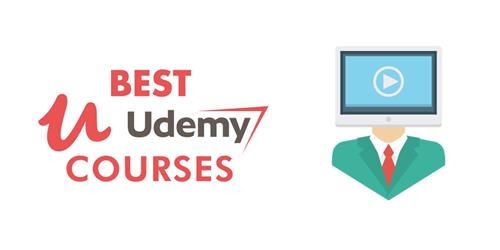 Free Download Streamlining Revenue Unveiling the Power of Billing
Free Download Streamlining Revenue Unveiling the Power of Billing
Last updated 6/2024
Created by Mehul Parmar
MP4 | Video: h264, 1280x720 | Audio: AAC, 44.1 KHz, 2 Ch
Genre: eLearning | Language: English | Duration: 13 Lectures ( 3h 8m ) | Size: 1.15 GB
Billing, Salesforce Billing,CPQ, Billing Software, Accounting,Taxation, Revenue Recognition, Payment Processing
What you'll learn
Salesforce CPQ
Salesforce Billing
Quote to Billing Process
Salient features of Salesforce Billing
Requirements
Salesforce Admin
CRM Basics
Description
Dive into the world of streamlined invoicing and revenue management with our comprehensive Salesforce Billing course on Udemy. Whether you're a business professional seeking to enhance your financial operations or an aspiring Salesforce administrator looking to expand your skill set, this course is tailored to meet your needs.Throughout this engaging and practical course, you'll gain a deep understanding of Salesforce Billing's features and functionalities. From creating accurate invoices to managing complex billing cycles, you'll learn how to leverage Salesforce Billing to optimize your organization's revenue processes. We'll explore various billing models, including one-time charges, subscriptions, and usage-based pricing, equipping you with the knowledge to adapt to diverse business needs.Our experienced instructors will guide you through hands-on exercises and real-world examples, ensuring that you grasp key concepts and develop practical skills that you can immediately apply in your job role. You'll discover how to integrate Salesforce Billing seamlessly with Salesforce CRM, harnessing customer data to personalize invoices and enhance customer satisfaction.Furthermore, you'll delve into advanced topics such as automated billing schedules, revenue recognition, and billing rules customization, empowering you to tailor Salesforce Billing to suit your organization's unique requirements. Whether you're a beginner or an experienced Salesforce user, this course offers something valuable for everyone.By the end of the course, you'll emerge as a proficient Salesforce Billing user, equipped with the knowledge and skills to drive efficiency, accuracy, and growth in your organization's billing processes. Enroll now and take the first step towards becoming a Salesforce Billing expert!
Who this course is for
Students | CPQ or Billing Admin
Salesforce Developers
Salesforce Architect
Revenue Ops
Finance Controller
Homepage
Код:
https://www.udemy.com/course/streamlining-revenue-unveiling-the-power-of-billing/
Screenshot
Код:
Rapidgator
https://rg.to/file/7cf1089442d9e09c511444e1b45a65f1/gmogv.Streamlining.Revenue.Unveiling.the.Power.of.Billing.part2.rar.html
https://rg.to/file/cd4a49f6de3be6aad67e2e9440346750/gmogv.Streamlining.Revenue.Unveiling.the.Power.of.Billing.part1.rar.html
Fikper Free Download
https://fikper.com/lxqAnm06C5/gmogv.Streamlining.Revenue.Unveiling.the.Power.of.Billing.part2.rar.html
https://fikper.com/p5uijtHrkk/gmogv.Streamlining.Revenue.Unveiling.the.Power.of.Billing.part1.rar.html
No Password - Links are Interchangeable
|

|

|
 17.11.2024, 22:27
17.11.2024, 22:27
|
#1915
|
|
Местный
Регистрация: 31.08.2024
Сообщений: 19,689
Сказал(а) спасибо: 0
Поблагодарили 2 раз(а) в 2 сообщениях
|
 Streamlit Deployer son app de Machine Learning sur le web
Streamlit Deployer son app de Machine Learning sur le web
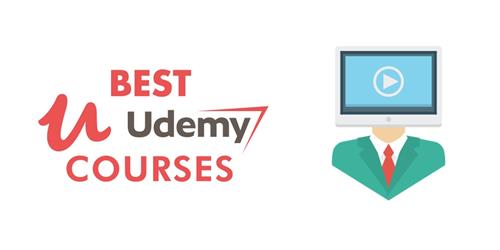 Free Download Streamlit Deployer son app de Machine Learning sur le web
Free Download Streamlit Deployer son app de Machine Learning sur le web
Last updated 9/2024
Created by Pierre-louis Danieau
MP4 | Video: h264, 1280x720 | Audio: AAC, 44.1 KHz, 2 Ch
Genre: eLearning | Language: French + subtitle | Duration: 25 Lectures ( 4h 38m ) | Size: 1.74 GB
Créez rapidement une superbe application web et déployez votre modèle d'IA dans le monde entier avec Python !
What you'll learn
Savoir utiliser Streamlit
Développer et déployer son application Data afin de partager ses modèles de Machine Learning sur le web
Scrapper de la Data en temps réel grâce à une API (Yahoo Finance)
Utilisation de Streamlit Cloud
Créer des visuels attrayants avec les librairies interactives de Python
Créer une interface utilisateur attractive (UI / UX)
Structurer son programme Python pour du développement web
Savoir optimiser une application Streamlit (Cache / Session / Form...)
Utilisation de Git et Github
Surpasser le Jupyter Notebook et donner vie à son projet Data
Requirements
Une connaissance élémentaire du language de programmation Python est requise pour mieux comprendre les concepts abordés dans cette formation. De simples connaissances suffisent.
Aucune compétence en développement web et/ou en data engineering n'est nécessaire. L'ensemble des concepts sont abordés depuis le début.
Aucune expérience dans le cloud n'est requise. Vous apprendrez tout ce qu'il est utile de savoir pour la partie déploiement / mise en production.
Description
Avez-vous déjà ressenti la frustration d'avoir développé un super modèle de Machine Learning sur votre Jupyter Notebook et de ne jamais pouvoir le confronter à une utilisation réelle ? C'est la proposition de valeur de Streamlit et de cette formation: Pouvoir déployer votre projet Data sur le web afin que le monde entier puisse l'utiliser grâce à votre propre application web !Ainsi, l'ensemble de vos projets Data vont prendre vie ! Vous allez ainsi pouvoir : Partagez votre superbe classificateur d'images afin que d'autres personnes puissent utiliser votre modèle en y téléchargeant leurs propres images.Déployez en temps réel le score de sentiment des derniers tweets d'Elon Musk avec du NLP.Ou encore réaliser des dashboards interactifs à destination de vos équipes en entreprise avec un système d'authentification pour restreindre l'accès à seulement quelques personnes.J'ai développé ce cours après que des dizaines de personnes m'aient contacté pour me demander comment j'avais fait pour développer une application web de réservation de trains en temps réel, utilisée par plus de 10 000 personnes. Car oui on peut utiliser streamlit pour tous types d'applications et non seulement des applications data / IA !Bref, des centaines de cas d'usage sont possibles avec streamlit !Ce qui est formidable dans tout ça, c'est qu'il suffit uniquement d'avoir des connaissances en Python.Et qu'aucune compétence en Développement web, en Data Engineering ou même en cloud n'est nécessaire.Ce cours est scindé en 2 parties : Une partie exercice où nous verrons l'ensemble des fondamentaux de Streamlit, depuis la connection à un système de base de donnée, en passant par la création de l'interface puis finalement la partie sur le déploiement dans le cloud !Une seconde partie destinée au projet de formation : Développement et mise en production d'une application de tracking et d'analyse des actions du S&P5O0 avec notamment la visualisation de l'évolution du cours des actions et le calcul d'indicateurs de performances. Les données seront requêtées via une API.Faites passer vos projets data à l'étape supérieure avec Streamlit !Bonne formation  Who this course is for
Who this course is for
Des personnes s'intéressant à la Data et à Python mais qui sont frustrés de ne jamais pouvoir partager leurs modèles de Machine Learning autour d'eux !
Des Data Scientist en entreprise qui souhaitent partager leurs travaux de Machine Learning ou des dashboards en interne pour leurs collaborateurs.
Une personne qui a une idée de projet d'application web et qui souhaite développer un MVP en quelques heures !
Tous bons Data Sientists !
Homepage
Код:
https://www.udemy.com/course/streamlit-deployer-son-app-de-machine-learning-sur-le-web/
Screenshot
Код:
Rapidgator
https://rg.to/file/05c4fd25d34d31558952388d1adb14c8/fktew.Streamlit..Deployer.son.app.de.Machine.Learning.sur.le.web.part2.rar.html
https://rg.to/file/56728b99d11983f74923ed3d0c6dfd5f/fktew.Streamlit..Deployer.son.app.de.Machine.Learning.sur.le.web.part1.rar.html
Fikper Free Download
https://fikper.com/N3Ko4FbJHc/fktew.Streamlit..Deployer.son.app.de.Machine.Learning.sur.le.web.part2.rar.html
https://fikper.com/d2lF2Fw9Dl/fktew.Streamlit..Deployer.son.app.de.Machine.Learning.sur.le.web.part1.rar.html
No Password - Links are Interchangeable
|

|

|
 17.11.2024, 22:29
17.11.2024, 22:29
|
#1916
|
|
Местный
Регистрация: 31.08.2024
Сообщений: 19,689
Сказал(а) спасибо: 0
Поблагодарили 2 раз(а) в 2 сообщениях
|
 Stress Management Awareness & Risk Factors
Stress Management Awareness & Risk Factors
 Free Download Stress Management Awareness & Risk Factors
Free Download Stress Management Awareness & Risk Factors
Published 10/2024
MP4 | Video: h264, 1920x1080 | Audio: AAC, 44.1 KHz
Language: English | Size: 214.02 MB | Duration: 0h 33m
Effective Stress Management Strategies | Stress Awareness | Risk Factors
What you'll learn
Foundations of Stress Management and the biology of stress
Key risk factors contributing to stress
Effective Stress Management strategies for daily life
Techniques for relaxation, mindfulness, and time management
Importance of nutrition in Stress Management
How to make practical dietary choices that support Stress Management
Requirements
There are no prerequisites for this course. It is open to anyone interested in learning about Stress Management and improving overall well-being.
Description
The Stress Management: Awareness & Risk Factors course provides a comprehensive understanding of Stress Management, including essential awareness of stress triggers, key risk factors, and effective techniques to manage stress in daily life. Designed with beginners in mind, this course is self-paced and includes pre-recorded modules that guide learners from fundamental concepts to advanced Stress Management practices. Participants will explore the science of stress, learn to identify unique stressors, and develop strategies to reduce the impact of stress on both mental and physical well-being.The course begins with Module 1, where students gain a foundational understanding of what stress is and why Stress Management is crucial for health. This module introduces the biological and psychological factors of stress, explaining how stress responses are part of human evolution yet require active Stress Management for a balanced lifestyle. Learners will discover why early identification of stress is the first step in Stress Management and why addressing stress promptly helps prevent negative long-term consequences.Module 2 focuses on risk factors associated with stress, shedding light on elements that often go unnoticed in daily life but significantly contribute to stress levels. Here, students will gain an understanding of personal and environmental factors that contribute to stress. Recognizing risk factors is essential in Stress Management as it allows individuals to identify and address sources of stress. This module empowers learners to examine aspects of life that may amplify stress, such as work pressures, relationships, financial concerns, and lifestyle habits, making Stress Management proactive and preventive.Module 3 covers practical Stress Management strategies, providing students with various techniques to manage stress efficiently. This module dives into both immediate and long-term Stress Management practices, including relaxation exercises, mindfulness, time management, and effective communication. These techniques are essential tools for anyone looking to reduce stress and promote a healthier lifestyle. By practicing these methods regularly, students learn how Stress Management can be integrated seamlessly into daily routines, making it accessible and sustainable.The final module, Nutrition and Stress, highlights the often-overlooked role of nutrition in Stress Management. Here, learners will discover how diet influences stress levels and why maintaining a balanced diet can support stress resilience. This module explains how specific nutrients and foods either mitigate or aggravate stress, helping students understand the connection between diet and Stress Management. With practical tips for incorporating stress-supportive foods into daily meals, students are empowered to make nutritional choices that enhance overall Stress Management.By the end of the course, participants will have a well-rounded understanding of Stress Management principles and a toolkit of actionable strategies to implement immediately. The knowledge gained will allow learners to recognize stress triggers, minimize risk factors, and integrate Stress Management techniques for a healthier, more balanced life.
Overview
Section 1: Introduction
Lecture 1 Defining Stress
Lecture 2 Risk Factors for Stress
Lecture 3 Stress Management Strategies
Lecture 4 Nutrition and Stress
Lecture 5 Additional Materials: Case Studies & Mental Exercises
Individuals interested in learning more about Stress Management,Anyone experiencing stress and seeking ways to manage it,Students and professionals facing stress in academic or work environments,Health and wellness students looking to add Stress Management skills,Parents and caregivers who want to enhance Stress Management for family life,Anyone committed to building healthier stress responses
Screenshot
Homepage
Код:
https://www.udemy.com/course/stress-management-stress-awareness/
Код:
Rapidgator
https://rg.to/file/f35ebce97d72028980997b63da500fa5/wchin.Stress.Management.Awareness..Risk.Factors.rar.html
Fikper Free Download
https://fikper.com/5og3jA1AFG/wchin.Stress.Management.Awareness..Risk.Factors.rar.html
No Password - Links are Interchangeable
|

|

|
 17.11.2024, 22:31
17.11.2024, 22:31
|
#1917
|
|
Местный
Регистрация: 31.08.2024
Сообщений: 19,689
Сказал(а) спасибо: 0
Поблагодарили 2 раз(а) в 2 сообщениях
|
 Stroke Modern Diagnostics And Treatment
Stroke Modern Diagnostics And Treatment
 Free Download Stroke Modern Diagnostics And Treatment
Free Download Stroke Modern Diagnostics And Treatment
Published 10/2024
MP4 | Video: h264, 1920x1080 | Audio: AAC, 44.1 KHz
Language: English | Size: 271.19 MB | Duration: 0h 42m
"Mastering Recognition and Management of Stroke: From Symptoms to Recovery"
What you'll learn
the latest world classifications of strokes
modern diagnostics and treatment according to European recommendations
prevention of vascular diseases. Basic possibilities of pharmacological prevention
the most modern procedures of pharmacological and angiological treatment
differential diagnosis of strokes
Requirements
no special technical requirements. the course is in English with written materials. we recommend a mobile phone, computer or tablet
the course is conducted in English. The course materials are available in written form in English, which in printed form can serve as a handbook
Description
Participants will also delve into the various classifications of stroke, such as ischemic, hemorrhagic, and transient ischemic attacks (TIAs), gaining a deeper understanding of the distinct characteristics, causes, and outcomes associated with each type. They will examine the impact of lifestyle factors, including diet, exercise, and alcohol consumption, on stroke risk, and explore preventive measures that can be implemented at both individual and community levels. The importance of public awareness campaigns and early education on recognizing stroke symptoms-using acronyms like FAST (Face, Arms, Speech, Time)-will be discussed to emphasize timely action. Participants will also review the long-term effects of stroke on cognitive function, emotional health, and quality of life. This includes the psychological aspects, such as post-stroke depression and anxiety, and strategies for providing holistic, patient-centered care. Case studies will be used to highlight real-world applications of clinical practices and innovations in stroke management, fostering a more comprehensive approach to treatment that integrates both acute care and long-term rehabilitation efforts.Participants will explore in-depth the acute management of strokes, focusing on both angiological and pharmacological interventions. The session will cover the critical time window for acute ischemic stroke treatment, often referred to as the "golden hour," where prompt action can save lives and prevent long-term disability. Thrombolytic therapy, particularly the administration of tissue plasminogen activator (tPA), will be emphasized as a key pharmacological intervention for dissolving blood clots. The participants will also learn about the criteria for tPA administration, including contraindications and risks associated with delayed treatment.On the angiological side, mechanical thrombectomy will be discussed as an advanced endovascular technique used to remove large clots from blocked arteries in eligible patients. This procedure has shown remarkable success in improving outcomes when performed within a specific time frame after symptom onset. Participants will gain insights into the pre-hospital care strategies and coordination with stroke centers that facilitate rapid transfer and treatment. Furthermore, the use of anticoagulants, antiplatelet therapy, and neuroprotective agents will be explored in detail to highlight their role in secondary stroke prevention and improving overall patient prognosis.
Overview
Section 1: Introduction
Lecture 1 Definitions
Lecture 2 Etiopathogenesis
Lecture 3 Classification
Lecture 4 Diagnostics
Lecture 5 Differential diagnosis
Lecture 6 Acute therapy
Lecture 7 Acute therapy (complications)
Lecture 8 Contraindications
Lecture 9 IVT while on full anticoagulation
Lecture 10 Secondary prevention
Lecture 11 Carotid endarterectomy/stenting
intended for those interested in cerebrovascular accidents, medical school students, doctors,those interested in strokes, nurses, neurologists, angiologists, internists
Screenshot
Homepage
Код:
https://www.udemy.com/course/stroke-modern-diagnostics-and-treatment/
Код:
Rapidgator
https://rg.to/file/4f87d02f9810091231f13fe469ae3197/opnag.Stroke.Modern.Diagnostics.And.Treatment.rar.html
Fikper Free Download
https://fikper.com/g3B7wubrfy/opnag.Stroke.Modern.Diagnostics.And.Treatment.rar.html
No Password - Links are Interchangeable
|

|

|
 17.11.2024, 22:33
17.11.2024, 22:33
|
#1918
|
|
Местный
Регистрация: 31.08.2024
Сообщений: 19,689
Сказал(а) спасибо: 0
Поблагодарили 2 раз(а) в 2 сообщениях
|
 Structural design of road pavement
Structural design of road pavement
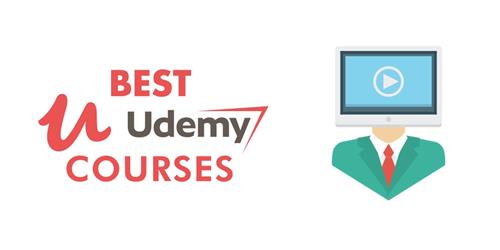 Free Download Structural design of road pavement
Free Download Structural design of road pavement
Published 10/2024
Created by Mohammad Hamdan
MP4 | Video: h264, 1280x720 | Audio: AAC, 44.1 KHz, 2 Ch
Genre: eLearning | Language: English | Duration: 40 Lectures ( 2h 15m ) | Size: 1 GB
Structural design of asphaltic pavement
What you'll learn
understanding the component of flexible pavement
understanding the method of constructing a flexible pavement
understanding what is the traffic survey and vehicle classification
Determining the ESWL for different axle configurations
learning how to design pavement structure and determine pavement layers thickness by CBR design method
Learn how to determine EALF, TF
Determining the ESAL by analyzing the traffic survey data
understanding the concept of the equivalent axle load and the method of calculating ESAL
learning how to design pavement structure and determine pavement layers thickness by AASHTO design method
Requirements
No pre-requirement
Description
This course will discuss several important subjects for road Engineers. This course will discuss mainly the method of designing the structure of a pavement. The design of a pavement structure means determining the layers of a pavement, furthermore, determining the thickness of each layer. The purpose of a structural design of Pavement is to determine the suitable pavement to sustain a specific traffic volume for the design period. In this course, you will learn the design of Pavement by the use of CBR method and AASHTO method. The design of Pavement by the use of AASHTO method will include determining a set of parameters such as ESWL which is a number calculated to represent the traffic carried by the pavement during the design life, also, resilient modules, reliability, standard deviation and other parameters are determined to calculate the structural numbers of different pavement layer. SN is used to determine the thickness of different pavement layers. You will see the process of determining all these parameters to find the thickness of Pavement layers. This course will include a various examples to simplify and enhance the understanding process. Also, it will include quizzes and assignments.This course will also briefly explain the construction of a pavement and the component of a flexible pavement. This course will briefly discuss the procedures of constructing Embankment, laying and compaction of granular subbase and roadbase layers. Also, the procedure of laying asphalt and the types of asphaltic concrete courses. In conclusion, this course will focus on designing and construction of a flexible pavement. At the end of this course, you should have a sufficient knowledge of how the pavement is constructed, the different pavement layers and properties of each layer. Also, how to design a pavement and how to analyze the traffic survey data to determine the ESAL and then determining the thickness of different pavement layers.
Who this course is for
This course for any one who want to learn about road engineering. this course will exhibit a various subject related to flexible pavement as mentioned above. i tried in this course to simplify all subject and make it easier to understand through various examples and assignment.
Homepage
Код:
https://www.udemy.com/course/structural-design-of-road-pavement/
Screenshot
Код:
Rapidgator
https://rg.to/file/0288f703a92957b0a0ecae1e10bd39ae/xgtag.Structural.design.of.road.pavement.part1.rar.html
https://rg.to/file/87e39477e662185785883383550263ea/xgtag.Structural.design.of.road.pavement.part2.rar.html
Fikper Free Download
https://fikper.com/HImGpDXffm/xgtag.Structural.design.of.road.pavement.part2.rar.html
https://fikper.com/SMfopn9soN/xgtag.Structural.design.of.road.pavement.part1.rar.html
No Password - Links are Interchangeable
|

|

|
 17.11.2024, 22:36
17.11.2024, 22:36
|
#1919
|
|
Местный
Регистрация: 31.08.2024
Сообщений: 19,689
Сказал(а) спасибо: 0
Поблагодарили 2 раз(а) в 2 сообщениях
|
 Structured Finance 360 From Credit Risk To Asset Swaps
Structured Finance 360 From Credit Risk To Asset Swaps
 Free Download Structured Finance 360 From Credit Risk To Asset Swaps
Free Download Structured Finance 360 From Credit Risk To Asset Swaps
Published 10/2024
MP4 | Video: h264, 1920x1080 | Audio: AAC, 44.1 KHz
Language: English | Size: 2.02 GB | Duration: 6h 9m
Master the art of structured finance and credit derivatives to navigate complex financial markets with confidence!
What you'll learn
Introduction to Structured Finance - Understand the essential principles and the role structured finance plays in global markets.
Credit Rating and Credit Risk - Learn about the importance of credit ratings, credit events, and the mechanisms of credit risk management.
Credit Default Swaps (CDS) - Dive into credit default swaps, their definitions, pricing, and practical applications in managing default risk.
Securitization - Explore the process of securitization, including asset types, tranching, and the benefits of structuring assets into marketable securities.
The 2008 Financial Crisis - Analyze the causes, key events, and long-lasting impact of the 2008 financial crisis on structured finance markets.
New Financial Instruments - Discover post-crisis financial instruments and innovations in the structured finance space.
Advanced Credit Derivatives - Master complex credit derivatives such as total return swaps, asset swaps, and basket default swaps.
Securitization Process - Get a step-by-step breakdown of the securitization process, its components, and its risks and rewards for investors.
Requirements
Basic Knowledge of Finance - Familiarity with fundamental finance concepts such as bonds, interest rates, and financial markets.
Understanding of Risk Management - A basic grasp of financial risk management, especially credit and market risk, will be beneficial.
Quantitative Skills - Proficiency in mathematical concepts such as probability, statistics, and basic financial mathematics.
Familiarity with Derivatives - Some prior exposure to financial derivatives (e.g., options, futures) is helpful but not mandatory.
Analytical Mindset - The course involves analyzing complex financial instruments and markets, so an analytical approach will support the learning process.
Description
Course Introduction: Structured finance is a critical aspect of the modern financial world, providing innovative ways to manage and mitigate risk. This comprehensive course delves into the essentials of structured finance, beginning with an introduction to the field, credit ratings, and credit default swaps, leading to in-depth explorations of securitization, credit derivatives, and advanced financial instruments. Designed for both beginners and experienced finance professionals, the course takes a detailed, practical approach to understanding how structured finance impacts financial markets, businesses, and global economies.Section 1: Structured Finance 01 - BeginnersThis section introduces the fundamental concepts of structured finance. Students will learn about the role of credit ratings, credit default swaps (CDS), and how credit events shape the financial landscape. The course covers the origin of securitization, beginning with an introduction to the process and its connection to financial crises, particularly focusing on the 2008 global financial crisis. Lectures will explore how new financial instruments emerged post-crisis, leading to a deeper understanding of tranching and its role in structured finance. The section concludes with an analysis of different asset classes and the securitization process, highlighting its benefits for financial institutions.Section 2: Structured Finance 02 - Credit DerivativesThis section moves into more advanced territory with a focus on credit derivatives. It begins with an introduction to the derivative markets and explains how derivatives are used to hedge credit risk. Students will explore the differences between asset-side and liability-side products, and dive deeper into credit default swaps (CDS), understanding their pricing, the calculation of accrued premiums, and the relationship between default probabilities and bond/CDS equivalence. Other key instruments such as credit-linked notes, total return swaps, and basket default swaps are covered in detail, providing students with a comprehensive overview of credit derivatives in structured finance.Section 3: Structured Finance 03 - SecuritizationIn the final section, students will focus on the process of securitization, a crucial component of structured finance. The section begins with an exploration of mortgage securitization and introduces the various types of asset-backed securities (ABS). The core concepts of tranching are discussed in depth, as well as the types of assets that are used in securitization. Students will gain practical knowledge of the securitization process, from the initial stages to its final execution, while also learning about the key benefits securitization provides to the financial markets. By the end of this section, students will have a thorough understanding of how securitization works and its importance in structured finance.Conclusion: This course equips students with a holistic understanding of structured finance, starting from the foundational concepts to advanced credit derivatives and securitization processes. By completing this course, students will be able to analyze financial markets, manage credit risk through structured finance tools, and better understand the mechanisms that shape global finance.
Overview
Section 1: Structured Finance 01 - Beginners
Lecture 1 Introduction to Structure Finance
Lecture 2 Credit Rating
Lecture 3 Credit Default Swap
Lecture 4 Credit Event
Lecture 5 Securitization
Lecture 6 The Beginning
Lecture 7 2008 Crisis
Lecture 8 2008 Crisis Continue
Lecture 9 New Instruments
Lecture 10 Tranching
Lecture 11 More on Tranching
Lecture 12 Different Assets
Lecture 13 Securitization Process
Lecture 14 Securitization Process Continue
Lecture 15 Securitization Benefits
Lecture 16 Conclusion
Section 2: Structured Finance 02 - Credit Derivatives
Lecture 17 Introduction to Structured Finance
Lecture 18 Uses of Derivative Markets
Lecture 19 Asset Site Product
Lecture 20 Liability Side
Lecture 21 Credit Risk
Lecture 22 Credit Default Swaps
Lecture 23 Definition of CDS
Lecture 24 Definition of CDS Continue
Lecture 25 CDS Pricing
Lecture 26 CDS Pricing Continues
Lecture 27 Calculate Accrued Premium
Lecture 28 Default probabilities
Lecture 29 Default probabilities Continues
Lecture 30 Bond CDS Equivalence
Lecture 31 Credit Linked Note
Lecture 32 Other Credit Derivatives
Lecture 33 Total Return Swap
Lecture 34 Asset Swap
Lecture 35 Basket Default Swap
Lecture 36 Basket Default Swap Continues
Lecture 37 Probability of Two Entities
Lecture 38 Conclusion
Section 3: Structured Finance 03 - Securitization
Lecture 39 Introduction to Securitization
Lecture 40 Securitization Mortgage
Lecture 41 Types of ABS
Lecture 42 Basics of Tranching
Lecture 43 Basics of Tranching Continues
Lecture 44 Assets Used for Securitization
Lecture 45 The process of Securitization
Lecture 46 The process of Securitization Continues
Finance Professionals - Individuals working in banking, investment management, or financial institutions who want to deepen their knowledge of structured finance and credit derivatives.,Risk Managers - Professionals involved in managing financial risk, particularly credit risk, who wish to enhance their understanding of complex financial products.,Analysts and Consultants - Those working as financial analysts, credit analysts, or consultants seeking to expand their expertise in structured finance.,Students of Finance and Economics - Graduate or advanced undergraduate students looking to specialize in structured finance or pursue careers in investment banking, credit rating agencies, or financial advisory firms.,Investors and Traders - Individuals interested in understanding securitization, credit derivatives, and other structured products to make informed investment decisions.,Finance Enthusiasts - Anyone passionate about learning how structured financial products work, especially in relation to credit risk and the 2008 financial crisis.
Screenshot
Homepage
Код:
https://www.udemy.com/course/structured-finance-360-from-credit-risk-to-asset-swaps/
Код:
Rapidgator
https://rg.to/file/3ace91dd0e7f2ce6e1de381954909b4d/mmorc.Structured.Finance.360.From.Credit.Risk.To.Asset.Swaps.part3.rar.html
https://rg.to/file/ba19adbfcead899062681497680d553c/mmorc.Structured.Finance.360.From.Credit.Risk.To.Asset.Swaps.part1.rar.html
https://rg.to/file/ba90ca8477f589b648c98721b07aa0e0/mmorc.Structured.Finance.360.From.Credit.Risk.To.Asset.Swaps.part2.rar.html
Fikper Free Download
https://fikper.com/1sVdw3tDR4/mmorc.Structured.Finance.360.From.Credit.Risk.To.Asset.Swaps.part2.rar.html
https://fikper.com/NZWolkYYNP/mmorc.Structured.Finance.360.From.Credit.Risk.To.Asset.Swaps.part3.rar.html
https://fikper.com/hiRMDnRWx7/mmorc.Structured.Finance.360.From.Credit.Risk.To.Asset.Swaps.part1.rar.html
No Password - Links are Interchangeable
|

|

|
 17.11.2024, 22:38
17.11.2024, 22:38
|
#1920
|
|
Местный
Регистрация: 31.08.2024
Сообщений: 19,689
Сказал(а) спасибо: 0
Поблагодарили 2 раз(а) в 2 сообщениях
|
 Subquery Magic Write awesome SQL, Master T-SQL Sub Queries
Subquery Magic Write awesome SQL, Master T-SQL Sub Queries
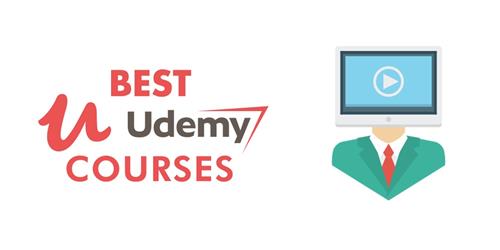 Free Download Subquery Magic Write awesome SQL, Master T-SQL Sub Queries
Free Download Subquery Magic Write awesome SQL, Master T-SQL Sub Queries
Last updated 6/2024
MP4 | Video: h264, 1280x720 | Audio: AAC, 44.1 KHz
Language: English | Size: 678.82 MB | Duration: 2h 9m
Subquery MySql, PostgreSQL, SQLite, Microsoft SQL Server | TSQL | Correlated subquery | Inner query | Nested query
What you'll learn
Write subqueries to select data from multiple tables.
Create subqueries to return a single value or multiple values.
Use subqueries in the SELECT, FROM, WHERE, and HAVING clauses.
Understand and use correlated subqueries, which depend on values from the outer query.
Use subqueries to solve problems such as finding maximum or minimum values and records that don't have corresponding entries in other tables.
Understand the difference between IN, EXISTS, and ANY/ALL operators in subqueries.
How to use subqueries to create more complex queries and better understand the structure and relationships in a database.
Requirements
You should already be familiar with SELECT, GROUP BY, and ORDER BY clauses
If you can write a simple select statement, then you're ready for this course!
No special equipment needed, all exercises are done online.
Optional: Install a MySQL, PostgreSQL, or SQL Server learning lab on your own computer.
Description
In this course, you will learn the fundamentals of subqueries and how to use them effectively in your MySql, PostgreSQL, or MS SQL Server SQL statements. You will learn about different types of subqueries, including correlated and uncorrelated subqueries, and how to use them to solve complex problems. You will also learn about common pitfalls to avoid when working with subqueries, and how to optimize their performance in your queries.By the end of this course, you will have a solid understanding of how to use subqueries in your SQL statements, and be able to apply this knowledge to a wide range of real-world scenarios.In this Course you will Learn to:Know and understand subqueries.Identify subqueries in SQL.Use subqueries in your select statement to make your queries more robust and less reliant on hard coded values.Harness the power of derived tables to work around SQL limitations. Derived tables are also known as subqueries in the FROM clause.Use subqueries in the WHERE clause with EXISTS and INUse subqueries with SUM, MAX and other Aggregate functions in GROUP BY and HAVING.Write correlated subqueries so that your subquery is able work with the outer query to become more flexible and robust.Nothing is worse thanBeing excited to learn something new but not knowing where to start.Wasting time learning the wrong features.Being overwhelmed with options and not know which to use.Imagine Having...Knowledge - Knowing how to quickly use subqueries to take your SQL to the next level.Confidence - Feeling good that you're on the right track.Accomplishment - Having a sense of accomplishment that you've learned something most cannot.Fun - Actually having fun learning SQL subqueries!By the time you've completed this SQL course you'll have an appreciation of subqueries, overcome your fear, and able to write correlated queries to make your SQL more robust.
Overview
Section 1: Introduction
Lecture 1 Welcome to Subquery Magic
Lecture 2 What is a Subquery?
Section 2: Setting Up Your Learning Lab
Lecture 3 Should I use SQL Server, MySQL or PostgreSQL to Learn Subqueries?
Lecture 4 Using the Pizza DB in this Course
Lecture 5 Using the Pizza DB with SQL Server
Lecture 6 Using the Pizza DB with MySQL
Lecture 7 Using the Pizza DB with PostgreSQL
Section 3: Writing your First Subquery
Lecture 8 Place a subquery in the column list
Lecture 9 Incorporate Subqueries into Expressions
Section 4: Create Correlated Subqueries
Lecture 10 Demystify Correlated Subqueries
Lecture 11 Demystify Correlated Subqueries - Example
Lecture 12 Write a Correlated Subquery with Two Tables
Lecture 13 Do you have any questions?
Lecture 14 Correlated subqueries versus Inner Joins, which is better?
Section 5: Create Subqueries in the WHERE and HAVING Clauses
Lecture 15 Get Existential with Exists
Lecture 16 Are you in? Use the IN Condition to Test for Membership
Lecture 17 Subquery in the Having Clause
Lecture 18 Get fancy and write a correlated subquery in the HAVING clause
Lecture 19 Get fancy and write a correlated subquery in the HAVING clause - Part B
Section 6: Write Queries using Derived Tables
Lecture 20 What is a Derived Table?
Lecture 21 Joining Derived Tables
Section 7: Wrap-up
Lecture 22 Bonus Lecture
Beginner SQL query authors curious about subqueries.,If you're struck writing subqueries or baffled by correlated subqueries, then this course is for you!,Business analysts looking more ways to write queries,Recent college graduates looking to hone their SQL skills,Job applicants looking for that extra edge with their next interview!
Homepage
Код:
https://www.udemy.com/course/sub-query-magic-write-t-sql-subqueries-using-sql-server/
Код:
Rapidgator
https://rg.to/file/7a4a7324cc688d7adc4e1117df133cea/eurkx.Subquery.Magic.Write.awesome.SQL.Master.TSQL.Sub.Queries.rar.html
Fikper Free Download
https://fikper.com/vqsSqr6zBf/eurkx.Subquery.Magic.Write.awesome.SQL.Master.TSQL.Sub.Queries.rar.html
No Password - Links are Interchangeable
|

|

|
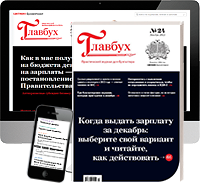      
Любые журналы Актион-МЦФЭР регулярно !!! Пишите https://www.nado.in/private.php?do=newpm&u=12191 или на электронный адрес pantera@nado.ws
|
Здесь присутствуют: 18 (пользователей: 0 , гостей: 18)
|
|
|
 Ваши права в разделе
Ваши права в разделе
|
Вы не можете создавать новые темы
Вы не можете отвечать в темах
Вы не можете прикреплять вложения
Вы не можете редактировать свои сообщения
HTML код Выкл.
|
|
|
Текущее время: 10:49. Часовой пояс GMT +1.
| |